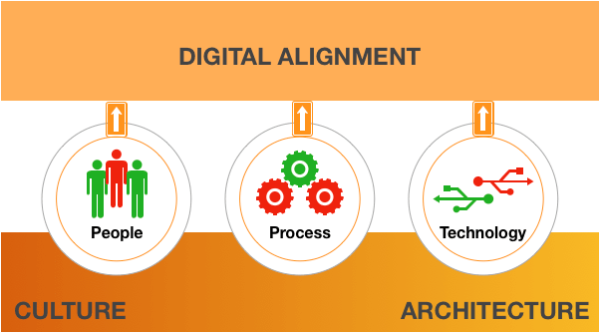Introduction
Organisations nowadays consider “being agile” as a crucial factor for success. When it comes to large enterprises, buzzwords like “enterprise agility”, “integration agile”, etc. are often thrown around and are quite common in the workplace lingo.
But what exactly is “being agile”? How is it beneficial to organisations? And how exactly does it work in an enterprise setting?
These are the questions that we will address in this article and give you an insight on how we at Chakray help organisations become “Integration Agile”.
First, let’s look at a few definitions.
What is Agile?
The Agile Alliance defines being agile as, “.. the ability to create and respond to change. It is a way of dealing with, and ultimately succeeding in, an uncertain and turbulent environment.”
The 3rd industrial revolution (digital revolution) saw to it that simple and complicated tasks (in software development as well as the development organisation) are already addressed or have a well defined, predictable way of being addressed. Any problem that remains to be solved in the modern era is at best complex or is in total anarchy.

The Stacey Complexity Model. From: Apello, J.
So how do we solve the unknown & uncertain? We put in a system that can adapt to complexity and help solve the problem as more of it is known and becomes certain (A CAS: Complex Adaptive System). And this is the reason why Agile teams and methods are required to solve modern day problems.
All agile methods are based on empirical process control which relies on the 3 fundamental pillars of transparency, inspection and adaptation.
The high levels of transparency adopted in agile projects (i.e. making significant aspects of the project/process visible to those responsible for the outcome) ensures that agile teams gain the required empirical knowledge to inspect and adapt (change) as needed to course correct and achieve business goals.
Note that when it comes to the agile teams themselves, it is more of a mindset. This mindset can be obtained with a firm and thorough understanding of the agile manifesto and the practice of the 12 principles behind it.
Enterprise Agility
According to Doug Rose, author of “Enterprise Agility for Dummies”; “Enterprise agility is agile for big products — typically one that requires many different teams throughout the organization that coordinate with many different departments and stakeholders.”
Enterprise agility is then nothing more than applying the principles of “agility” to solve business problems in large organisations while also addressing the additional complexities arising due to the large scale of the operations. But what are these additional complexities? Let’s look at a few below.
- Communication: keeping an uninterrupted flow of vital information streaming between each moving part and creating transparency.
- Coordination: having coordinated handshakes and hand-offs between the moving parts.
- Alignment: ensuring that all individually self-organised (autonomous) and self-sufficient (cross-functional) teams are moving towards one unified end goal.
- Learning: replicating success and mitigating failure from past learnings of individual units, among themselves and others.
- Risk Management: identification of risk events early and proactively to mitigate threats and exploit opportunities, at enterprise scale.
There are many popular enterprise agile frameworks such as the Scaled Agile Framework (SAFe), Large Scale Scrum (LeSS), and Disciplined Agile Delivery (DaD) that are actively used in the industry to tackle these enterprise level complexities.
The WSO2 “Integration Agile” platform is a new agile paradigm formulated by WSO2 to specifically address the challenges in enterprise scale integration projects from the prowess of an external SME.
WSO2 Integration Agile Platform
Every enterprise is at different maturity levels when it comes to its people, processes, and technology. These are in turn driven by the underlying culture and architecture subscribed to by the organisation. When the organisation wants to transform digitally all of these would factor in to define the maturity of the organisations digital alignment.

Understanding this, WSO2 came up with a new paradigm that would enable organisations at any level of maturity to achieve the benefits of enterprise agility when it undertakes to embark on its digital transformation journey.
The WSO2 Platform comprises a reference methodology for agility and a reference architecture for agility to align the people, processes, and technology of organisations at any maturity level towards the highest levels of enterprise agility.
The Chakray Touch
As a premier certified WSO2 partner, Chakray Consultancy has all the resources required to make an organisation at any maturity level to become “Integration Agile”.
All Chakray consultants have over 5 years of exposure working with WSO2 products using agile methodology with enterprises of varying degrees of maturity. This enables us to help our clients build their level of maturity in enterprise agility to the highest levels possible.
Given below is a snapshot of how a unit would look like once it reaches a steady state in terms of agile maturity.








